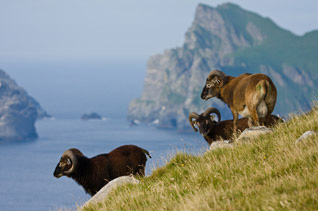
The growing number of mega-fires around the world may be contributing to global warming, a new United Nations report says, calling on governments to introduce comprehensive strategies to reduce the risk of such conflagrations. The report from the Food and Agriculture Organization (FAO), released today at an international conference in South Africa, says policy-makers need to improve their monitoring of carbon gas emissions from wildfires to better determine the potential climate change impacts.
The report’s release follows a series of high-profile mega-fires, including the February 2009 Black Saturday blazes in Australia that killed 173 people and obliterated many towns, and record-setting fires last year in Russia that claimed the lives of 62 people and burned about 2.3 million hectares.
The report examined recent mega-fires in Australia, Botswana, Brazil, Indonesia, Israel, Greece, Russia and the United States.
Pieter van Lierop, a forestry officer with FAO, said today that the problem was becoming more urgent as the frequency and size of mega-fires increase and weather projections indicate hotter and drier fire seasons.
“Mega-fires are mainly caused by humans and are likely exacerbated by climate change, but now we suspect they may also in themselves represent a vicious circle that is speeding up global warming.”
The report found that nearly all the mega-fires studied were started by people, sometimes deliberately to clear land for the purposes of agriculture or development.
In all but one of the examples studied, drought was a factor that prolonged or exacerbated the blazes, with hot, dry and windy conditions also contributing to the intensity of the fires.
But the report noted two examples – one in south-western Australia and one in Florida in the US – where despite all the conditions being in place for the uncontrolled spread of a mega-fire, relatively little damage was done.
The report’s authors cited more balanced approaches by authorities in those areas that featured prevention, mitigation and suppression strategies to minimize the impact of fires.
In Australia, the state Government introduced a controlled burning programme in fire-prone areas, while in Florida a similar initiative by the US Forest Service and that state’s Government helped to reduce the risk from potential fires.
Meanwhile, in a message to today’s conference, Secretary-General Ban Ki-moon said recent fires and other disasters around the world “have made clear how vulnerable our cities and communities are and how much more effort is required to reduce our vulnerability.”
In the message, delivered by Johann G. Goldammer, leader of the UN Economic Commission for Europe (UNECE)/FAO Team of Specialists on Forest Fire and Coordinator of the Global Wildland Fire network, Mr. Ban welcomed the efforts of fire specialists to build what he described as “a culture of prevention.”
He stressed the need for a coordinated approach to fire management, encompassing agriculture, forestry, health, science, environmental issues, emergency responses and weather forecasting and monitoring.
“I encourage you to identify real solutions that will help communities and nations to better handle the adverse impacts of fires and to build safer, more sustainable societies for all.”
The report’s release follows a series of high-profile mega-fires, including the February 2009 Black Saturday blazes in Australia that killed 173 people and obliterated many towns, and record-setting fires last year in Russia that claimed the lives of 62 people and burned about 2.3 million hectares.
The report examined recent mega-fires in Australia, Botswana, Brazil, Indonesia, Israel, Greece, Russia and the United States.
Pieter van Lierop, a forestry officer with FAO, said today that the problem was becoming more urgent as the frequency and size of mega-fires increase and weather projections indicate hotter and drier fire seasons.
“Mega-fires are mainly caused by humans and are likely exacerbated by climate change, but now we suspect they may also in themselves represent a vicious circle that is speeding up global warming.”
The report found that nearly all the mega-fires studied were started by people, sometimes deliberately to clear land for the purposes of agriculture or development.
In all but one of the examples studied, drought was a factor that prolonged or exacerbated the blazes, with hot, dry and windy conditions also contributing to the intensity of the fires.
But the report noted two examples – one in south-western Australia and one in Florida in the US – where despite all the conditions being in place for the uncontrolled spread of a mega-fire, relatively little damage was done.
The report’s authors cited more balanced approaches by authorities in those areas that featured prevention, mitigation and suppression strategies to minimize the impact of fires.
In Australia, the state Government introduced a controlled burning programme in fire-prone areas, while in Florida a similar initiative by the US Forest Service and that state’s Government helped to reduce the risk from potential fires.
Meanwhile, in a message to today’s conference, Secretary-General Ban Ki-moon said recent fires and other disasters around the world “have made clear how vulnerable our cities and communities are and how much more effort is required to reduce our vulnerability.”
In the message, delivered by Johann G. Goldammer, leader of the UN Economic Commission for Europe (UNECE)/FAO Team of Specialists on Forest Fire and Coordinator of the Global Wildland Fire network, Mr. Ban welcomed the efforts of fire specialists to build what he described as “a culture of prevention.”
He stressed the need for a coordinated approach to fire management, encompassing agriculture, forestry, health, science, environmental issues, emergency responses and weather forecasting and monitoring.
“I encourage you to identify real solutions that will help communities and nations to better handle the adverse impacts of fires and to build safer, more sustainable societies for all.”










